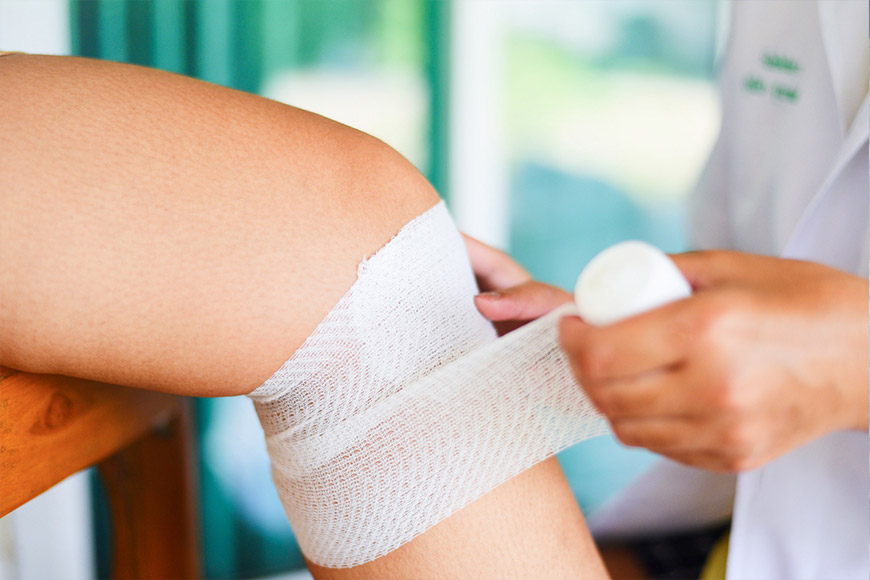
Wounds
Wounds - types, causes and treatment, Belgrade. TOP PRICE✓ Diabetic foot✓ VAC therapy✓ Vasculator✓ Treatment of chronic wounds✓ Fast wound healing.
Wounds
In everyone's life, it happens to get a wound. Every wound must be treated properly. We will list the types of wounds. They are:
- Chronic
- Acute
- Infected
What is important to know is that all types of acute wounds can turn into chronic ones if not treated correctly, as prescribed by the doctor. This means that the wounds can become inflamed, infected, etc. Wounds must receive adequate primary treatment. For example, a wound may not be stitched, or after stitching, the wound may dehisce. As a rule, such wounds heal on their own, and it just takes some time.
Likewise, wounds can be more extensive. Additionally, after about ten days, healing may be unsuccessful, and surgical treatment is then advised.
Due to poor circulation or diabetes, wounds may appear on the lower legs or feet. This condition is called diabetic foot.
When treating these wounds, the underlying disease that caused them, such as diabetes, must be addressed, as well as the wound itself, which appeared as a consequence.
Treatment of Wounds with VAC Therapy and Vaskulator
There is therapy that uses a vaskulator. In other words, it can be called passive vascular training, or more figuratively, it is a kind of "gymnastics" for blood vessels. It is known that blood vessels must be elastic and not brittle, as this can lead to their rupture. What is concerning in this situation is the fact that blood vessels are distributed throughout the human body, in the brain, heart, arms, legs, and all the organs we have.
When classic active kinetic therapy is not possible, the vaskulator can be applied and will take on a crucial role. Physical therapy allows vaskulator therapy to be applied in parallel to achieve better and faster results in patient treatment.
The advantages of VAC therapy are:
- Reduces the amount of extracellular fluid by removing exudate from the wound surface; extracellular fluid accumulates in the interstitial area
- Capillaries expand due to the therapy
- Granulation is ensured
- Local edema is reduced
- Bacterial colonization decreases
- Hydrostatic pressure decreases
- The wound becomes clean and isolated from exudate, bacteria, and other toxins
As seen from the above, the benefits of the vaskulator and VAC therapy are numerous, so the recovery of the affected person can only be accelerated. It is particularly useful for diabetics, who are prone to developing wounds on their bodies, or the condition worsens with the appearance of diabetic foot.
Some wounds can remain open for years, and an example of this is an ingrown hair. Reconstructive surgery offers a solution for these wounds and their permanent treatment, which means that after the intervention, such a wound will heal within seven to ten days.
In chronic wounds, gram-negative bacteria, which do not need oxygen to live, can find a place to thrive. This means that the wound must be exposed to oxygen, dressed multiple times a day, and so on.
Sometimes, wounds can be large and extensive, even penetrating body cavities, making reconstruction more demanding and complex.
How to Contact Us?
For more information about our services or if you have any questions, feel free to visit our CONTACT page and get in touch with us. We’re here to help!